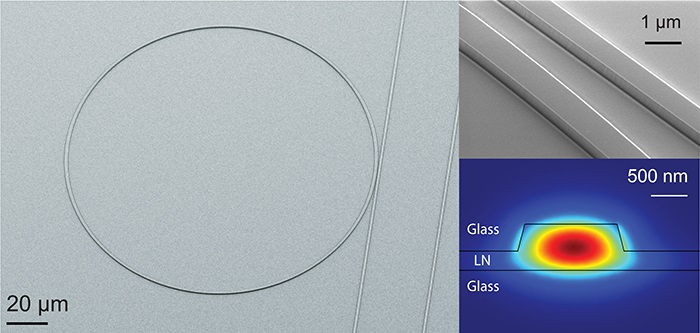
A micro-ring and micro-racetrack resonators made on lithium niobate film. Image credit: Loncar Lab/Harvard SEAS
Researchers at Harvard University have developed a new technique to etch lithium niobate sheets for use in optoelectronics.
Lithium niobate is particularly suited for electro-optics, acousto-optics, and non-linear optics because of its large electro-optic coefficients, but it can be difficult to etch. Chemical etching will not work, so other methods have been tried, many of them time-consuming. The Harvard team has applied plasma reactive ion etching to lithium niobate and found it effective in creating waveguides as well as in minimizing optical power losses.
The first step in the plasma reactive ion etching was to draw patterns for waveguides on a photoresist layer with electron-beam lithography, the same as used in standard silicon etching. This then created a mask that could be placed over niobate film. Argon ions were scattered across the sample (this is the actual plasma reactive ion etching), stripping material away where it had been etched and forming waveguides in that fashion.
“The next step is the integration of the niobate into silicon photonic processing, and that may be challenging because niobium is not a material people in the silicon industry like very much. Maybe we will have to turn to dedicated fabrication facilities that will allow this hybrid electronic integration,” said Marko Lončar, professor of electrical engineering at Harvard’s John A. Paulson School of Engineering and Applied Sciences. “For now, we have to make the niobium chips and the silicon chips separately and couple them together.”
Even without that streamlined process, this technique of creating waveguides produces optical power losses of only 50 percent over 1 meter, the university said.
There is some precedent for manufacturing these at a commercial level: the thin film substrates combined for the plasma reactive ion etching were produced commercially.
Filed Under: Materials • advanced




